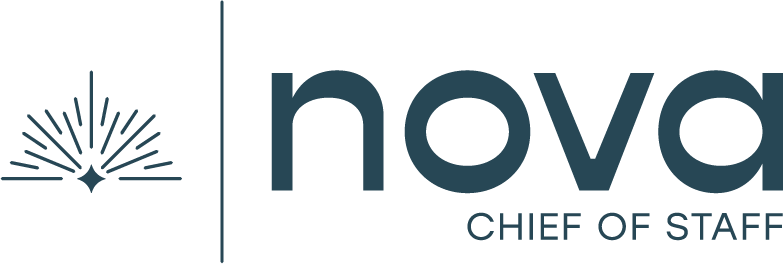Executive Assistant to Chief of Staff
Are you an Executive Assistant looking for more responsibility, ownership, or leadership? Are you excellent at your job and wanting more to learn and challenge you? Do you love supporting senior executives at the top of a business but you are looking to take the step into a more strategic role? Chances are, the Chief of Staff role has crossed your mind.
What’s the difference between an Executive Assistant and a Chief of Staff?
Executive Assistants and CoSs both support CEOs or Founders, and at first glance it may be hard for some to understand the differences: both drive organization & focus, and keeping the CEO / Founder prepared is of utmost importance. However, an EA is focused on highly detailed tasks including expenses, travel, meeting and scheduling logistics, and often integral personal support for their leader. The CoS is a senior level leader, who is a strategic thought partner to the business leader, and may act as their proxy in certain situations. A CoS can manage complex company wide initiatives, lead large teams, oversee operational aspects of the business, and drive strategic planning at a high level.
And this is where it can get blurry: a strong Executive Assistant may already be acting as a proxy to their leader, as a strategic thought partner, and they may already be tasked with strategic projects at times. For these reasons, the CoS role can be a natural progression for motivated and driven Executive Assistants who are looking for their next step.
Key Similarities and Differences
Leading a Team: The CoS role may be responsible for leading others on a back office team. This is usually not the case for an EA.
Project Ownership: An EA likely has their hands in a lot of buckets and are key contributors to each. Imagine all the poeple working on things for the company leader that they need EA support with… EAs are often an important part of everything but may not own projects outside of supporting their leader. On the other hand a CoS may be aware of a lot of the projects going on likely owns several. This includes running meetings, driving deliverables, reporting progress, presenting materials, etc.
Influential Leadership: Both EAs and CoSs are Kings and Queens of influential leadership. How do you get what you want when your needing it from someone who doesn’t directly report to you?! Ask an EA or a CoS.
Facilitation & Tracking: EAs may track some deliverables or facilitate a meeting or two, but that’s the MEAT of a strong CoS. A strong CoS should be able to run an effective meeting, make sure everyone in the session is heard from and feels supported, keep meetings on time, report progress back to their leader and more. Additionally a CoS should be masters of follow through and executive project management, which requires a high level or organization. Something most EAs also probably have.
Strategy & Execution: An EA role is highly executionary: booking travel, owning calendars, expense reconciliation… attention to detail is important and the ability to get things done on time is key. The CoS role is also very much about execution, mainly the initiatives of the business leader they support. But the CoS role is also a strategic position. The CoS should be able to look at the business they are supporting and drive process changes and efficiencies based on what they see are bottle necks, they should be able to give feedback on presentations and materials delivered to the business leader by others, they should create tools, templates, and plans to support the team’s needs, and they should be able to map out and run and effective rhythm of business that drives business forward.
Does the Chief of Staff role sound right for you? Check out the CoS Certification course that focuses on the foundational skills described above to land and excel in a Chief of Staff role.
